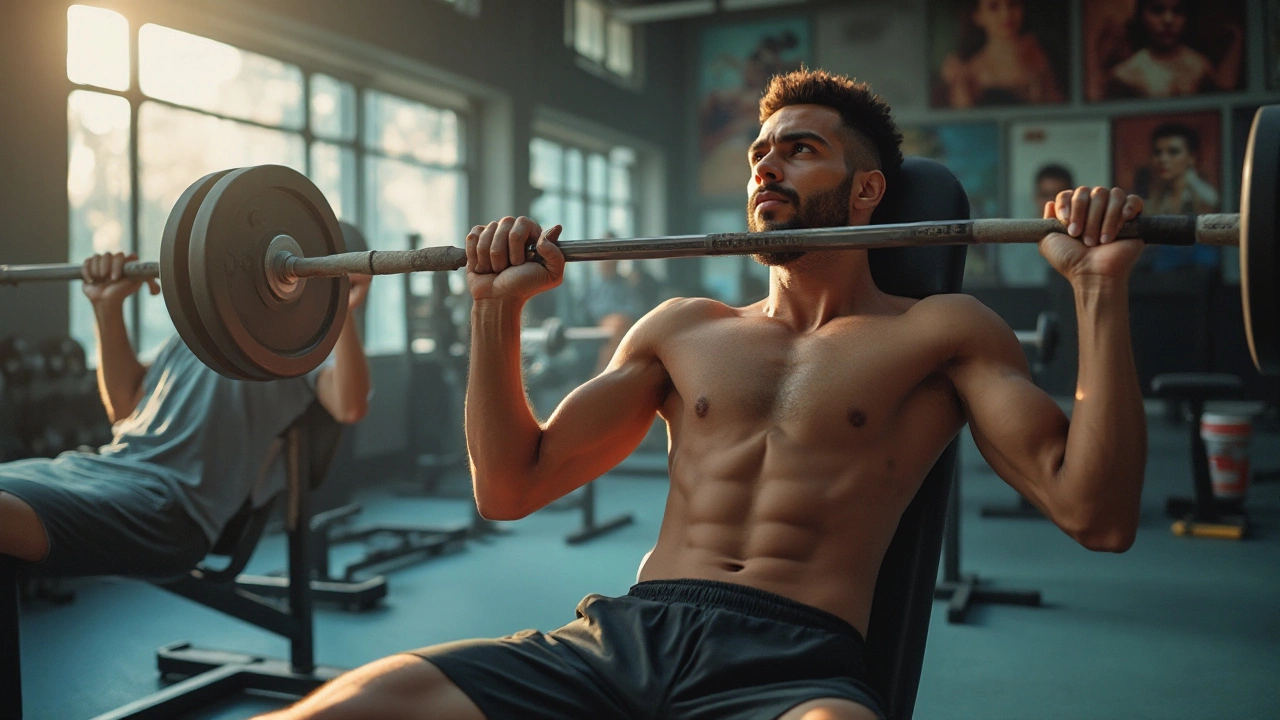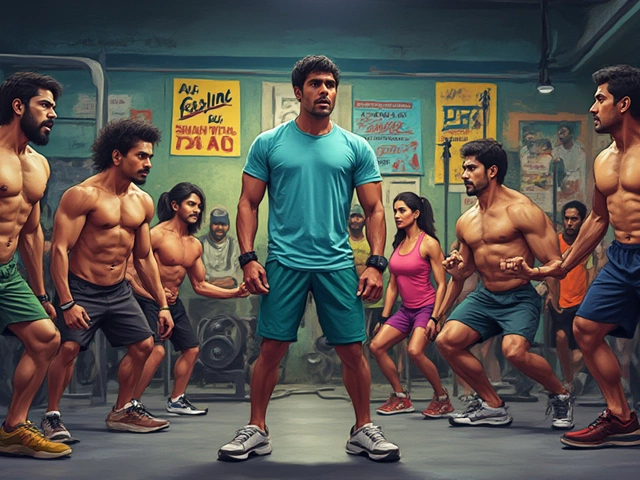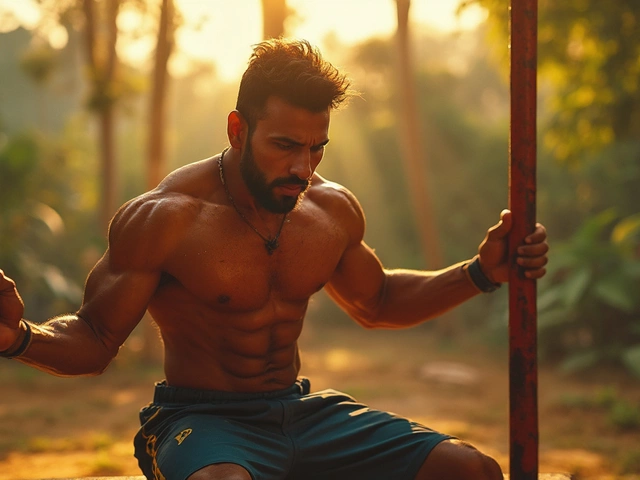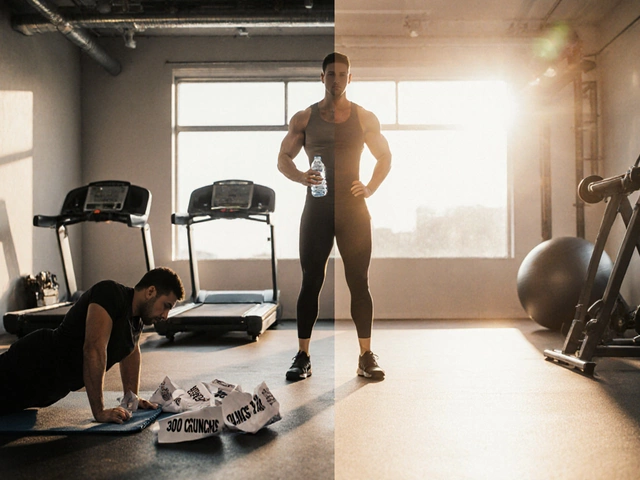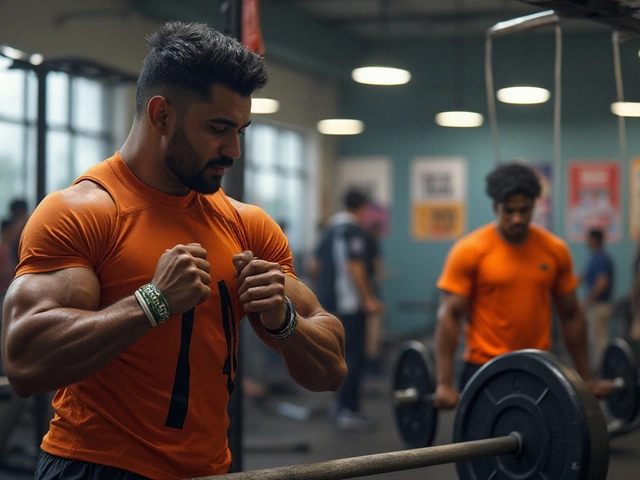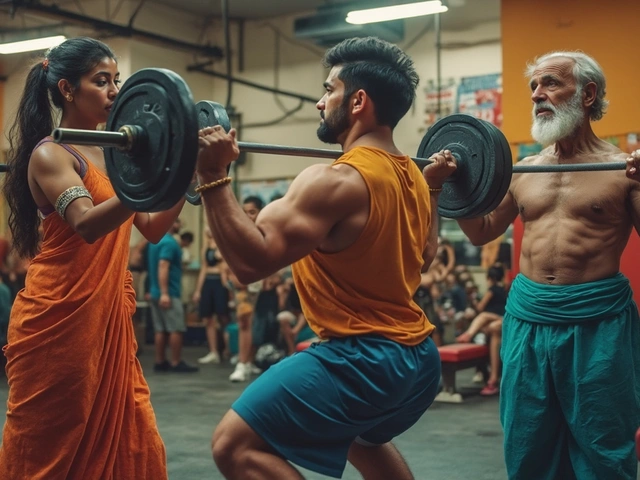In the world of strength training, there are few exercises as important as the Big 5. These foundational movements form the backbone of any effective gym routine, pushing both novices and veterans to new heights.
Understanding how to rank these exercises isn't just about knowing which muscles they target. It's about optimizing your performance, preventing potential injuries, and achieving balance across your workout regimen.
Let's dive deep into the heart and science behind each of these exercises, offering you insights that can enhance your workouts and transform your fitness journey.
- Understanding the Big 5
- Mastering the Proper Techniques
- Benefits of Each Exercise
- Building Your Workout Routine
Understanding the Big 5
In the expansive realm of gym workouts, the term "Big 5" refers to a selection of exercises that have come to epitomize strength and foundational fitness. These are not just random selections; they were chosen because they target multiple muscle groups, enhance balance and coordination, and are pivotal for building overall physical robustness. So, what are these exercises, and why do they garner such respect from the fitness community? Let's take a deeper look into each one.
The Big 5 exercises include the Squat, Deadlift, Bench Press, Overhead Press, and Bent-Over Row. Each exercise, revered for its effectiveness, demands a combination of power, precision, and persistence. While some may argue the relativeness of another exercise's importance, these five have steadfastly remained in the spotlight due to their compound nature. Compound exercises are those that engage multiple joints and muscle groups, as opposed to isolation exercises which target a single muscle. This compound characteristic is essential for not only improving strength but also for fostering functional fitness—a term that highlights the importance of being fit for real-world tasks. Through these exercises, one can ensure they're not just lifting weights for aesthetic purposes but to enhance their ability to perform daily activities efficiently.
The Squat, often hailed as the king of exercises, is known for engaging the entire body. Primarily working the quadriceps, hamstrings, and glutes, squats also involve core stabilization and upper body support, especially when performed with a barbell. On the other hand, the Deadlift is lauded for its ability to build back, core, and leg strength, serving as one of the most natural ways to enhance muscle power. Meanwhile, the Bench Press focuses on the chest, shoulders, and triceps, while the Overhead Press zeroes in on the deltoids and upper chest muscles. Finally, the Bent-Over Row significantly aids in improving the strength of your back and biceps. While each exercise requires precision and practice, their collective impact on one's body composition and strength can be transformative.
One might wonder about the origins of such hyped exercises. Historically, the strongest and fittest individuals weren’t sculpted purely based on aesthetics. Instead, these exercises became fundamental because of their applicability to real-world movements. According to fitness educator and guru, Bill Starr, "Compound exercises have the inherent ability to teach full body tension and endurance."
In his book, Starr highlights the evolutionary importance of these exercises, pointing out that they mimic the kind of activities that humans have had to perform since time immemorial, from lifting heavy objects to reaching for high places.Such exercises are timelessly locked into the blueprint of functional fitness because they echo the primal human need to move with purpose and strength.
| Exercise | Primary Muscles Targeted | Benefits |
|---|---|---|
| Squat | Quadriceps, Hamstrings, Glutes | Builds leg and core strength |
| Deadlift | Back, Core, Legs | Enhances overall muscle power |
| Bench Press | Chest, Shoulders, Triceps | Boosts upper body strength |
| Overhead Press | Deltoids, Upper Chest | Improves shoulder stability |
| Bent-Over Row | Back, Biceps | Enhances back and arm strength |
In today's modern gym environments, the emphasis on the Big 5 hasn't waned, but rather, it's celebrated as the core of many strength training programs. The simplicity, accessibility, and profound impact of these exercises make them not just popular, but a crucial element of any well-rounded fitness approach. Whether you're a budding lifter eager to carve out a foundation, or a seasoned vet looking to revisit the essentials, understanding the nuances of the Big 5 exercises is imperative.
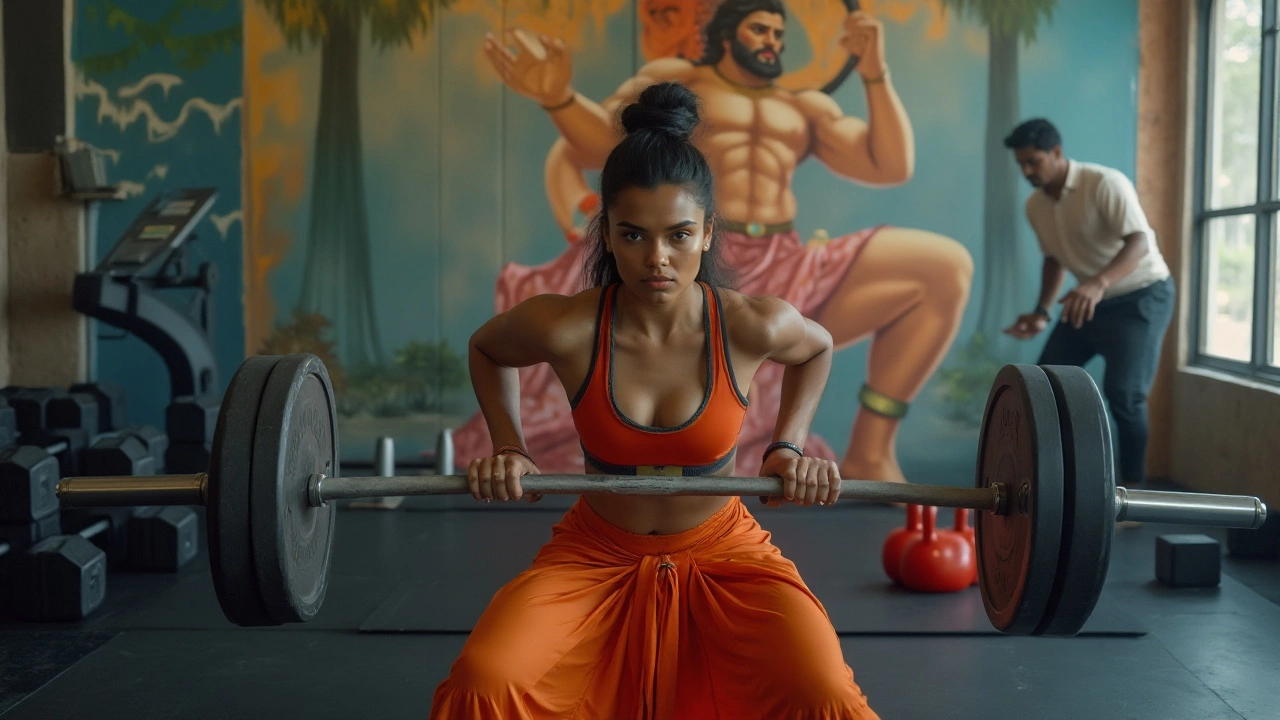
Mastering the Proper Techniques
When you embark on your journey with the Big 5 exercises, the right technique is your secret weapon for success. It’s not just about lifting weights; it’s about lifting them correctly to maximize benefits and minimize injuries. Let’s delve into the specifics of each of these powerhouse exercises, starting with the squat – often heralded as the king of all exercises. This movement is all about balance, posture, and muscle engagement. The key is to start with your feet shoulder-width apart, maintaining a straight back as you lower your hips. The knees must align with the toes throughout the motion. Bob Stone, a renowned fitness coach, once stated,
"A proper squat is not just a test of strength but a testament to your understanding of body mechanics."Ensuring that you descend as if sitting into a chair helps in engaging the right muscle groups effectively.
The deadlift challenges your entire body, but particularly your core and lower back. Begin with the barbell close to your shins and feet hip-width apart. As you lift, the barbell should stay close to your body, with your back straight and shoulders down and back. The emphasis on using the hips to drive the lift rather than your lower back is critical. This technique safeguards against strains and enhances the overall power of your execution.
Bench pressing might seem straightforward, but achieving optimal form requires focused attention. Begin by lying flat on the bench with your feet firmly planted on the ground. Grip the barbell shoulder-width apart, ensuring that your wrists stay in a neutral position. Lower the barbell with control to just below the chest and power it back up using both your chest and arms. It's vital to maintain tight core engagement throughout to stabilize the body.
Pull-ups, another member of the Big 5 exercises club, are about technique just as much as they are about strength. Start by gripping the bar with hands slightly wider than shoulder-width. As you pull up, focus on engaging your back muscles rather than leading with the elbows or swinging the body. A controlled ascent and descent make the movement effective and protect the shoulder joints.
Lastly, the overhead press – often underestimated, yet incredibly crucial for building upper body strength. Stand with your feet shoulder-width apart and the barbell resting at shoulder height. Engage your core and press the barbell overhead using a vertical path. Keep the elbows slightly in front of the bar to support the shoulders. A properly executed overhead press not only aids strength but significantly improves posture.
Here's a visual breakdown of key techniques across the exercises:
| Exercise | Technique Highlight |
|---|---|
| Squat | Maintain knee alignment and straight back |
| Deadlift | Keep the bar close to the body |
| Bench Press | Neutral wrist positions |
| Pull-up | Engage back muscles |
| Overhead Press | Vertical bar path with core engagement |
In mastering these techniques, remember that consistency trumps intensity. Regular practice with a focus on form will yield improvements not just in muscle strength but in overall performance, leading to a safer and more rewarding workout experience.
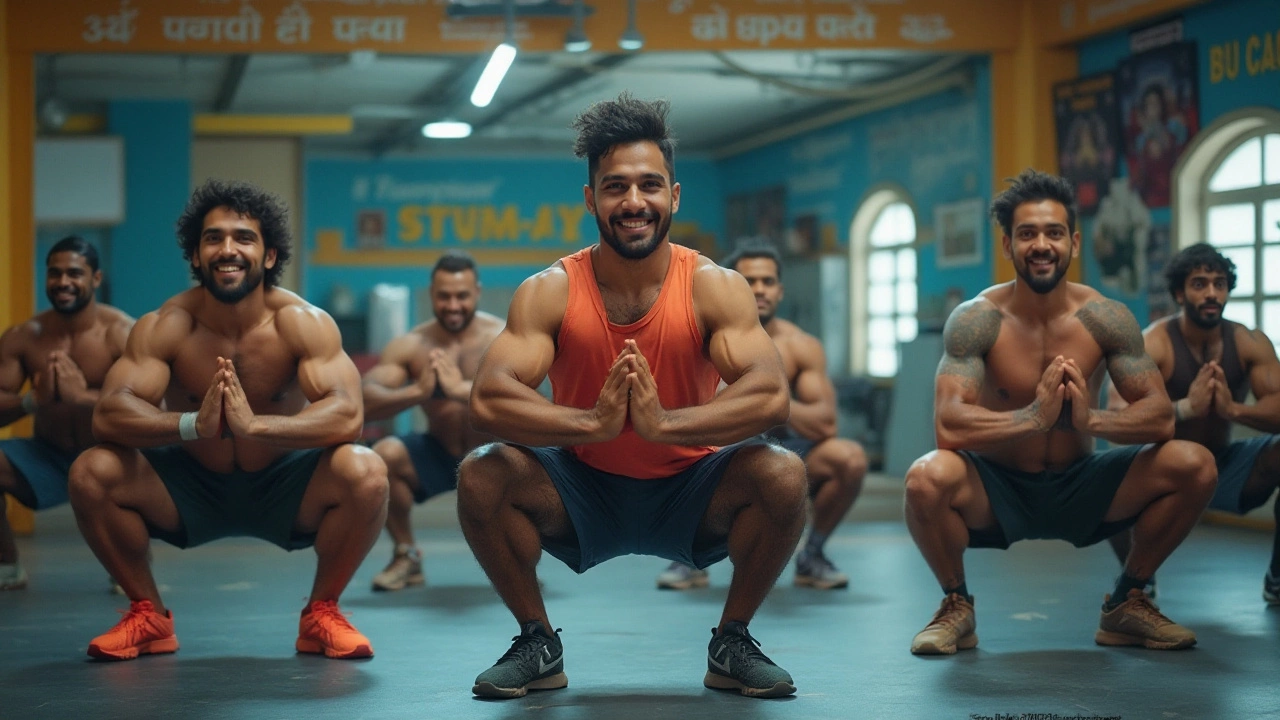
Benefits of Each Exercise
The Big 5 exercises have stood the test of time for a reason: they work. These exercises provide some of the most profound benefits for anyone looking to enhance their gym workouts. Let's start with the Squat. Few exercises can claim the king's spot like the squat. Squats target the quadriceps, glutes, adductors, and other leg muscles, essential for building overall leg strength. There's something empowering about dropping low and pushing back to the top. Not only do they build your legs, but they also engage your core, enhancing stability and balance across all activities. A fun fact — studies have shown that performing squats requires proper technique to maximize efficiency, with the feet shoulder-width apart and toes slightly pointed outwards.
Moving on to the Deadlift, perhaps the most respected of them all in strength training circles. This exercise works the entire posterior chain, from your calves right up to your traps, truly making it a full-body workout. In addition to the physical benefits, deadlifting can improve your body's ability to recruit multiple muscle groups simultaneously, an essential skill for athletic performance. A staggering statistic is that some of the world's strongest lifters can deadlift more than 1,000 pounds. Even if you aren't breaking records, deadlifts can significantly improve your functional strength and contribute to better posture.
Next, let's talk about the Bench Press. Known as a classic chest-building exercise, the bench press also works on your shoulders and triceps. It's incredibly beneficial for building upper body strength while enhancing muscle mass in the pecs. Some might say, "The bench press is a test of pure, raw strength." But beyond the admired brute force, the bench press also demands poise, with a controlled lowering of the bar being just as important as the upward press. Consistent bench pressing, coupled with a proper routine, can help in achieving a symmetrical look that many gym-goers aim for.
The fourth on the list, the Overhead Press, is an unsung hero. It targets the shoulders predominantly but involves your entire upper body. Many lifters champion the overhead press as a crucial exercise not only for shoulder development but also for core strength. With every press, you're effectively pushing yourself to stabilize and control weight over your head — setting a challenge for your body beyond mere muscle building. There is an artistry to perfecting technique, balancing strength and precision in movement.
Finally, the Barbell Row. Primarily activating the back muscles, including the lats, rhomboids, and lower back, it also engages the core more than many realize. The barbell row is vital for maintaining a balance between push and pull in workouts, crucial for complete and holistic upper body development. Research shows that exercises that involve pulling motions, like the barbell row, facilitate better engagement and growth of the back muscles compared to machines. Many seasoned trainers emphasize the significance of rowing for developing a strong back, contributing to better posture and the reduction of back pain.
When incorporated with consistency and a good understanding of form, these Big 5 exercises lay the groundwork for remarkable improvements in strength, aesthetics, and overall fitness. If you're looking to transform your workout routine, starting here might just be the key.
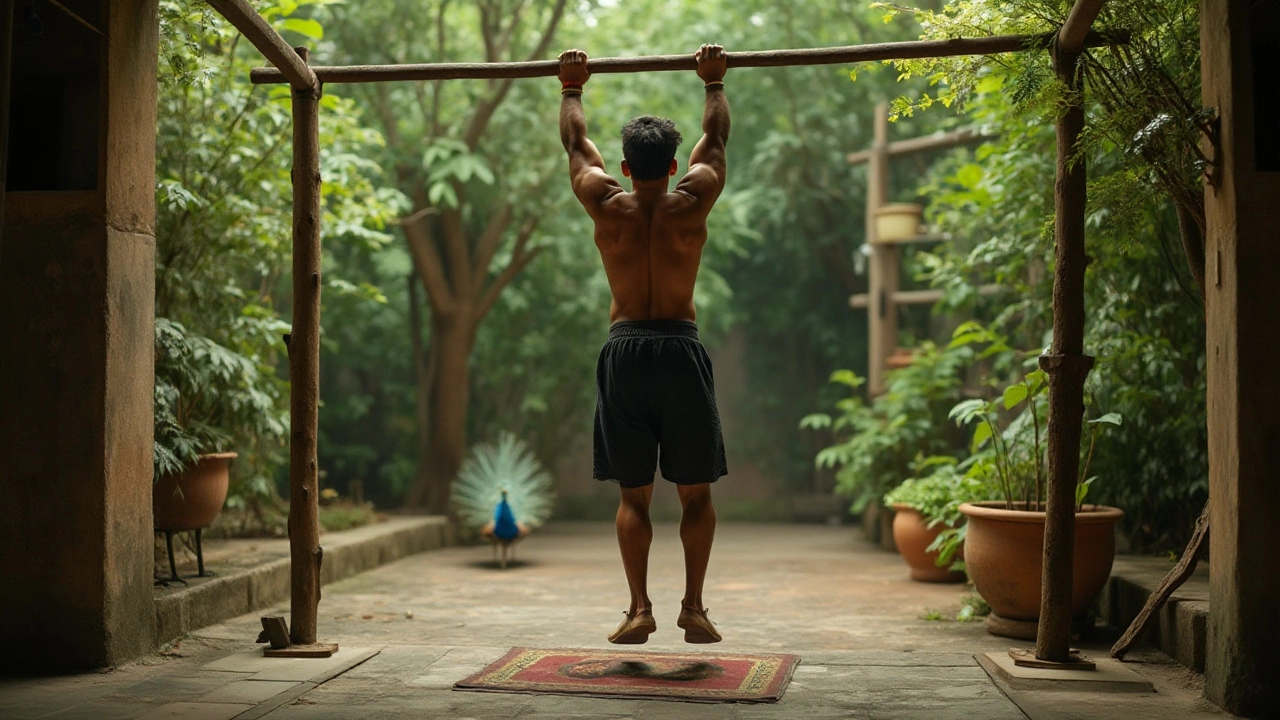
Building Your Workout Routine
Designing a workout routine that incorporates the Big 5 exercises is a deft blend of art and science. Whether you're stepping foot into the gym for the first time or you're a seasoned athlete, an intelligently structured layout can accelerate your progress. At its core, the routine should lean on efficiency and purpose, enveloping both the compound movements and their benefits. Start by determining your goals: whether it's to increase overall muscle strength, improve athletic performance, or perhaps a mix of different objectives. With your goals in clear view, integration of these exercises becomes even more insightful and effective.
Usually, a workout week can be broken into sessions that target different muscle groups, providing them ample time for recovery. Consider the timeless format of alternating between workout types: push/pull, upper/lower body, or a full-body regimen. This methodology isn't just convenient; it's scientifically backed, as it ensures that your elements are balanced, thus preventing potential muscular imbalances. Moreover, engaging in these gym workouts regularly ensures muscles don't adapt too quickly, thus continuing to challenge your body progressively.
"A structured routine forms the cornerstone of fitness. When you understand the body's need for balance, you focus not just on progress, but on sustained health," says Chris Duffin, renowned strength coach.
An optimal way to incorporate the Big 5 exercises can be through rotation, allowing variety not just in exercises but in their order of execution. Monday could kickstart with squats as a full-body wake-up call, working through deadlifts and then bench pressing as the week progresses. Switching up the order ensures no exercise becomes monotonous, and it cleverly manipulates muscle groups into not getting too accustomed to any single routine. Remember, the beauty of these key exercises lies in how they intertwine various muscle groups, compelling the body to work cohesively.
While intensity often defines how a regimen is perceived, variation should not be overlooked. Shifting the rep range, perhaps through a periodic cycle—say every 6 weeks—infuses your routine with new challenges. This method, known as periodization, can substantially optimize your progress, not just visually, but in tangible strength and endurance. Physical adaptation is gradual, and understanding that patience, alongside persistence, reaps the greatest rewards is indispensable. That said, always factor in rest days into your schedule, as recovery is just as critical to the body’s transformation.
Your diet forms the base on which your workouts hinge. A balanced intake of proteins, carbohydrates, and fats feeds muscles, ensuring that your strength training isn't sabotaged by nutritional shortcomings. Hydration amplifies this; water acts as a conduit, ensuring that nutrients are adequately supplied and waste efficiently disposed of. As you embark on crafting your workout blueprint, continually monitor your progress, adjusting goals, and methods as necessary.
Below is an example template you can adopt or tweak to your liking:
| Day | Main Exercise | Secondary Exercise | Accessory Moves |
|---|---|---|---|
| Monday | Squats | Overhead Press | Planks |
| Wednesday | Bench Press | Pendlay Rows | Lunges |
| Friday | Deadlift | Chin-Ups | Leg Raises |
Incorporating these structured elements will not only strengthen your foundation but provide a sustainable path forward in your fitness journey, affirming why the Big 5 exercises have been trusted staples across gyms globally, irrespective of trends that come and go.
